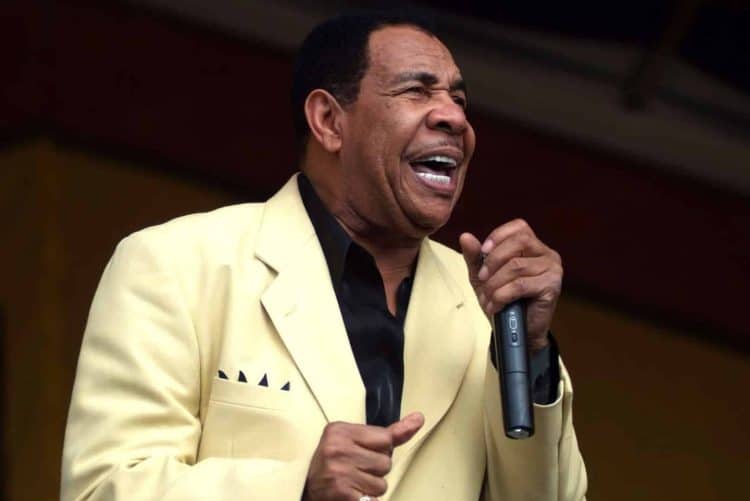In the illustrious tapestry of soul and R&B music, few voices shine as brightly as that of Gene Chandler. With a career spanning several decades, Chandler’s contribution to the genre is nothing short of legendary. As we embark on a musical journey through time, we find ourselves immersed in the rich and soulful sounds of this iconic artist. In this exploration of his discography, we present to you the “Top 10 Best Gene Chandler Songs of All Time,” a collection that not only encapsulates the essence of his remarkable career but also serves as a testament to his enduring impact on the world of music. From the infectious rhythms that dominated the dance floors to the heartfelt ballads that tugged at our emotions, Chandler’s repertoire is a mosaic of musical brilliance. Each track on this list represents a chapter in the sonic narrative of a man whose voice transcends generations. So, buckle up as we take a melodic stroll down memory lane, celebrating the timeless artistry of Gene Chandler and counting down the greatest hits that have left an indelible mark on the soulful landscape of music.
1. Duke of Earl

“Duke of Earl” is a timeless classic that encapsulates the essence of 1960s doo-wop and soul music. Released in 1962 by Gene Chandler, the song became an instant hit and solidified Chandler’s status as the “Duke of Earl” in the music scene. The smooth and velvety vocals combined with the infectious melody create a captivating experience that transports listeners back to the golden era of rhythm and blues. The song’s distinctive horn arrangements, soulful harmonies, and Chandler’s charismatic delivery contribute to its enduring appeal, making it a staple on oldies playlists and a cherished piece of musical history.
As the “Duke of Earl,” Gene Chandler exudes confidence and charm, portraying a character who revels in his royal status in the realm of love. The lyrics tell the story of a man who takes pride in his ability to win over hearts and rule the world of romance. The memorable chorus, featuring Chandler’s declaration of “Duke, Duke, Duke of Earl,” adds a catchy and anthemic quality to the song. “Duke of Earl” remains a classic example of the doo-wop genre’s ability to capture the spirit of an era, leaving an indelible mark on the landscape of American music. With its timeless appeal and universal themes of love and self-assurance, “Duke of Earl” continues to resonate with audiences, ensuring its place in the pantheon of soulful classics.
2. Groovy Situation

“Groovy Situation” is a soulful and upbeat anthem that epitomizes the essence of 1970s funk and R&B. Released in 1970 by Gene Chandler, the song showcases the artist’s versatility as he seamlessly navigates the transition from the doo-wop era to the funk-infused sounds of the ’70s. The infectious groove, punctuated by a lively horn section and a tight rhythm, invites listeners to immerse themselves in the vibrant musical landscape of the time. Chandler’s soulful vocals convey a sense of joy and celebration, perfectly complementing the dynamic instrumentation that characterizes the era.
The lyrics of “Groovy Situation” capture the spirit of the times, emphasizing the importance of enjoying life and reveling in positive experiences. Chandler’s smooth delivery and the catchy chorus contribute to the song’s feel-good atmosphere, making it a staple for dance floors and a timeless representation of the funk and soul fusion that defined an era. With its lively energy and memorable melodies, “Groovy Situation” remains a testament to Gene Chandler’s ability to adapt to changing musical landscapes while delivering timeless and infectious tunes that continue to captivate audiences. Whether revisiting the era or discovering it for the first time, the song’s groovy vibe ensures its enduring popularity and status as a classic of 1970s soul.
3. Nothing Can Stop Me

“Nothing Can Stop Me” is a powerful and soul-stirring anthem that emerged from the golden age of 1960s soul music. Released in 1965 by soul singer Gene Chandler, the song is a testament to resilience and determination. From the opening brass fanfare to Chandler’s impassioned vocals, the track exudes an infectious energy that captivates listeners. The driving rhythm, punctuated by a lively horn section and energetic background vocals, propels the song forward, creating an irresistible groove that defines the era’s signature sound.
Chandler’s vocals convey a sense of unwavering confidence and optimism, as the lyrics speak to overcoming obstacles and forging ahead despite challenges. The uplifting message, coupled with the dynamic musical arrangement, makes “Nothing Can Stop Me” a timeless anthem of empowerment. The song’s enduring popularity lies in its ability to resonate with audiences across generations, serving as a source of inspiration and motivation. As a classic example of 1960s soul, Gene Chandler’s “Nothing Can Stop Me” stands as a testament to the genre’s ability to blend powerful messages with infectious melodies, leaving an indelible mark on the landscape of soul music.
4. You Threw a Lucky Punch

“You Threw a Lucky Punch” is a soulful gem from the 1960s that showcases the dynamic vocal prowess of soul singer Gene Chandler. Released in 1962, the song stands out with its infectious rhythm, lively horn arrangements, and Chandler’s emotive delivery. The track seamlessly blends elements of doo-wop and R&B, creating a sonic landscape that captures the spirit of the era. Chandler’s smooth and expressive vocals tell the story of a romantic encounter gone awry, and the catchy chorus adds a memorable and melodic quality to the song.
The arrangement features a tight and energetic instrumental backdrop, with a prominent horn section and a driving rhythm that propels the song forward. The combination of Chandler’s soulful delivery and the lively musical accompaniment creates an irresistible groove that invites listeners to immerse themselves in the emotion and energy of the song. “You Threw a Lucky Punch” remains a classic example of the soulful sounds that defined the early 1960s, showcasing Gene Chandler’s ability to convey heartfelt emotions through his music. With its timeless appeal and engaging melody, the song continues to captivate audiences and holds its place as a cherished piece of soul music history.
5. Rainbow ’80

“Rainbow ’80” is a vibrant and infectious disco-funk anthem that embodies the spirited sounds of the 1980s. Released in 1980 by Gene Chandler, the song reflects the era’s shift towards disco-infused grooves and electronic instrumentation. The track opens with a pulsating rhythm and a synth-driven melody that sets the stage for a dancefloor-ready experience. Chandler’s smooth and soulful vocals seamlessly blend with the energetic arrangement, creating a dynamic sonic landscape that captures the essence of the disco era.
The lyrics of “Rainbow ’80” evoke a sense of celebration and joy, inviting listeners to join the dance and revel in the vibrant atmosphere. The catchy chorus, coupled with the rhythmic beats and funky guitar riffs, makes the song an irresistible invitation to the discotheque. As disco and funk converged in the 1980s, “Rainbow ’80” emerged as a testament to Gene Chandler’s ability to adapt his style to the evolving musical landscape while maintaining a sense of authenticity. The track remains a lively and nostalgic snapshot of the disco era, ensuring its place as a cherished gem in the repertoire of danceable classics from the 1980s.
6. Get Down

“Get Down” is a funk-infused disco anthem that epitomizes the high-energy dance music of the 1970s. Released in 1978 by Gene Chandler, the song reflects the era’s dynamic musical landscape, combining elements of funk, soul, and disco into a groove-worthy masterpiece. From the moment the infectious bassline kicks in, accompanied by rhythmic guitar riffs and a pulsating beat, “Get Down” sets the stage for a dancefloor sensation. Chandler’s commanding vocals exude confidence and charisma, perfectly complementing the electrifying instrumentation that defines the track.
The lyrics of “Get Down” amplify the party atmosphere, encouraging listeners to let loose and hit the dance floor. The repetitive yet catchy chorus, combined with the funky instrumental breaks, creates a seamless fusion of disco and funk that captivates the audience from start to finish. As a product of the late 1970s disco era, “Get Down” remains a timeless representation of the genre’s ability to create a euphoric and celebratory atmosphere. Gene Chandler’s contribution to the disco movement with this track showcases his versatility as an artist and his adeptness at crafting music that transcends generations, making “Get Down” a perennial favorite among disco enthusiasts.
7. Tomorrow’s Love

“Tomorrow’s Love” is a soulful ballad that showcases the tender and emotive side of Gene Chandler’s vocal prowess. Released in 1965, the song encapsulates the romantic sensibilities of the mid-1960s soul music era. From the gentle strumming of the guitar to the elegant orchestral arrangement, the musical backdrop complements Chandler’s heartfelt delivery, creating an intimate and timeless listening experience. The song’s melody unfolds like a love letter, weaving a narrative of hope and anticipation.
Chandler’s vocals convey a depth of emotion as he navigates the nuances of love, expressing both vulnerability and optimism. The orchestration, featuring lush strings and subtle harmonies, adds a layer of sophistication to “Tomorrow’s Love,” elevating it beyond a typical love ballad. The lyrics speak of the promise and potential of a future love, making the song a poignant exploration of romantic longing. As a testament to Gene Chandler’s ability to interpret a variety of musical styles, “Tomorrow’s Love” stands out as a beautiful example of soulful balladry, showcasing the artist’s versatility and leaving an enduring impact on the landscape of classic soul music.
8. What Now

“What Now” is a soulful ballad by Gene Chandler that takes listeners on an emotional journey through the complexities of love and heartbreak. Released in 1965, the song captures the essence of the mid-1960s soul music era with its lush orchestration and Chandler’s poignant vocals. The arrangement, featuring a delicate mix of strings and horns, provides a dramatic backdrop to Chandler’s expressive delivery, creating a melancholic yet beautiful atmosphere. “What Now” stands out as a timeless exploration of the aftermath of a love gone wrong.
Chandler’s vocals convey a sense of vulnerability and introspection as he grapples with the uncertainty of a broken relationship. The lyrics paint a vivid picture of emotional turmoil and the search for answers in the aftermath of a romantic fallout. The haunting melody and Chandler’s soulful interpretation make “What Now” a poignant and introspective ballad that resonates with anyone who has experienced the complexities of love and loss. As a classic example of soul’s ability to convey deep and universal emotions, “What Now” remains a timeless gem in Gene Chandler’s repertoire, showcasing his artistry and contributing to the rich tapestry of soul music from the 1960s.
9. You Can’t Hurt Me No More

“You Can’t Hurt Me No More” is a soulful and defiant anthem by Gene Chandler, released in 1967. The song encapsulates the spirit of resilience and empowerment that characterized much of the soul music from that era. From the assertive horn section to Chandler’s impassioned vocals, the track exudes a sense of determination and strength. The driving rhythm, punctuated by energetic background vocals, creates a dynamic and uplifting atmosphere, making it a standout piece in Chandler’s discography.
Chandler’s vocals convey a powerful message of self-empowerment and liberation from the pain of heartbreak. The lyrics reflect a sense of newfound freedom and resilience, as Chandler declares his emotional independence. The upbeat and spirited nature of “You Can’t Hurt Me No More” positions it as a soulful declaration of personal strength and triumph over adversity. As a classic example of soul music’s ability to blend powerful messages with infectious melodies, Gene Chandler’s contribution to the genre shines through in this empowering anthem, leaving an indelible mark on the landscape of 1960s soul.
10. In My Body’s House

“In My Body’s House” is a soulful and groovy track by Gene Chandler, released in 1984. This song reflects the influence of the evolving soundscapes of the 1980s, blending elements of soul, funk, and electronic music. The infectious rhythm, characterized by a funky bassline and upbeat percussion, immediately sets a vibrant and danceable tone. Chandler’s vocals, while maintaining his signature soulful delivery, adapt to the contemporary production style of the ’80s, creating a seamless fusion of classic soul and modern funk.
The lyrics of “In My Body’s House” contribute to its energetic atmosphere, inviting listeners to join in the celebration of music and dance. The song captures the essence of the era’s electronic and synth-driven sound, making it a notable entry in Gene Chandler’s later discography. As a testament to Chandler’s ability to evolve with the times, “In My Body’s House” showcases his versatility and willingness to embrace new musical trends while staying true to the soulful roots that define his career. This track stands as a lively representation of the intersection between classic soul and contemporary funk during the 1980s.









